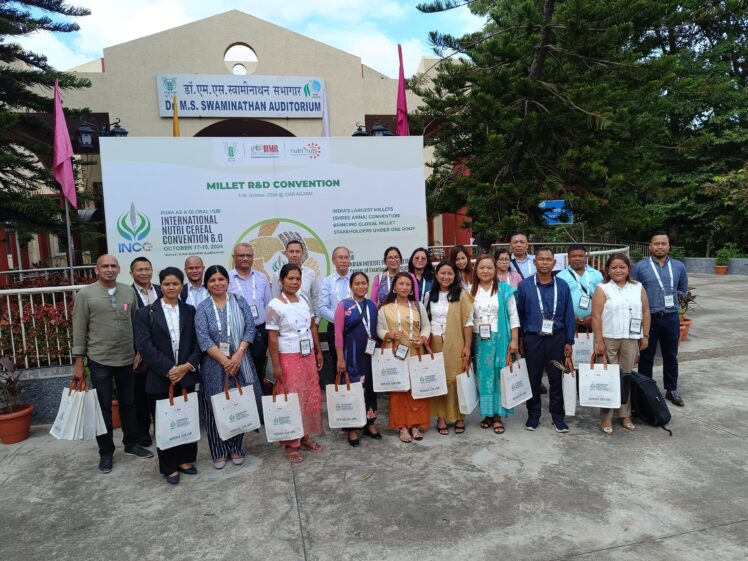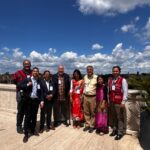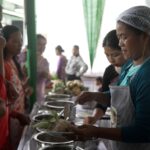
“Millet is not an option, it is the Imperative.”
With its focus revolving around the above-mentioned theme, the International Nutri Cereal Convention 6.0 has called on the government and all stakeholders to promote millet cultivation and consumption in the country while highlighting the critical role of millets in addressing global nutritional challenges.
The convention, organised by ICAR-Indian Institute of Millet Research and Nutri Hub in Hyderabad from October 17-19, witnessed the attendance of Kerala Agriculture Minister P Prasad, Member of National Technical Board of Nutrition (NTBN) Raj Bhandari, CEO Nutrihub, ICAR-IIMR Dr. B. Dayakar Rao among others.
A delegation of 20 Milleteers from Meghalaya, including agripreneurs, startups, farmers, and government officials from the Department of Food Processing, Department of Agriculture and Farmer’s Commission were also part of the event.
This year’s event marked a significant milestone in promoting millet cultivation and consumption, with discussions centred on food security, nutritional security, and the critical role of millets in addressing global nutritional challenges.

Key highlights from the convention include:
Raj Bhandari, Member NTBN, emphasized that even moderate millet consumption can lead to improved food and nutritional security. This is a seminal convention since each convention has led to greater engagement with millet and a better ecosystem. Millet is reaching every nook and corner of the world. The danger signs are indicating that our production is estimated to fall by 20% by 2030 while at the same time we will have more mouths to feed. Millet should be mainstreamed as there is more and more compelling evidence to support the benefits of millet.
Data indicates that there are 340 million tonnes of food grain in the country thereby assuring food security but the most critical next step is to ensure nutritional security. 1/3rd of the current cereals need to be replaced by millet but support has to be provided for value addition as radical revamping is the need of the hour.
The speakers called for collaborative efforts among government, farmers, bureaucrats, and the scientific community to promote millet cultivation and consumption.
In his speech, Kerala Agriculture Minister P Prasad informed of the plans to establish a Millet Board to further support the millet ecosystem even as he underscored the need to look to millets in the efforts to sustain and support the livelihoods of people especially at a time when climate change is staring us in the face.
ALSO READ:
How local youth can become key actors in biodiversity conservation
From Meghalaya to Mexico & Thailand, NESFAS’ slow food movement creates waves
Indigenous youth from Meghalaya discuss initiatives to enhance climate resilience in Rome
It is no coincidence that the convention highlighted the “Decade of Millet” and “Decade of Entrepreneurship” as these would have to go hand in hand to boost millet production and related businesses.
This convention provided insights for Meghalaya’s delegation, offering opportunities to learn from national experiences and explore ways to enhance millet cultivation and consumption in the state.
The piece de resistance was the tour of the Nutri-Hub facilities that was an eye-opener for the agripreneurs and entrepreneurs while presenting a world of possibilities for the Department of Food Processing as the ecosystem is built on solid foundations for the expanding millet market.
This visit is expected to provide encouragement to the ‘Milleteers of Meghalaya’ to come together in an organized manner and work collaboratively in defence of the climate friendly crop that was once the staple cereal of the state.







